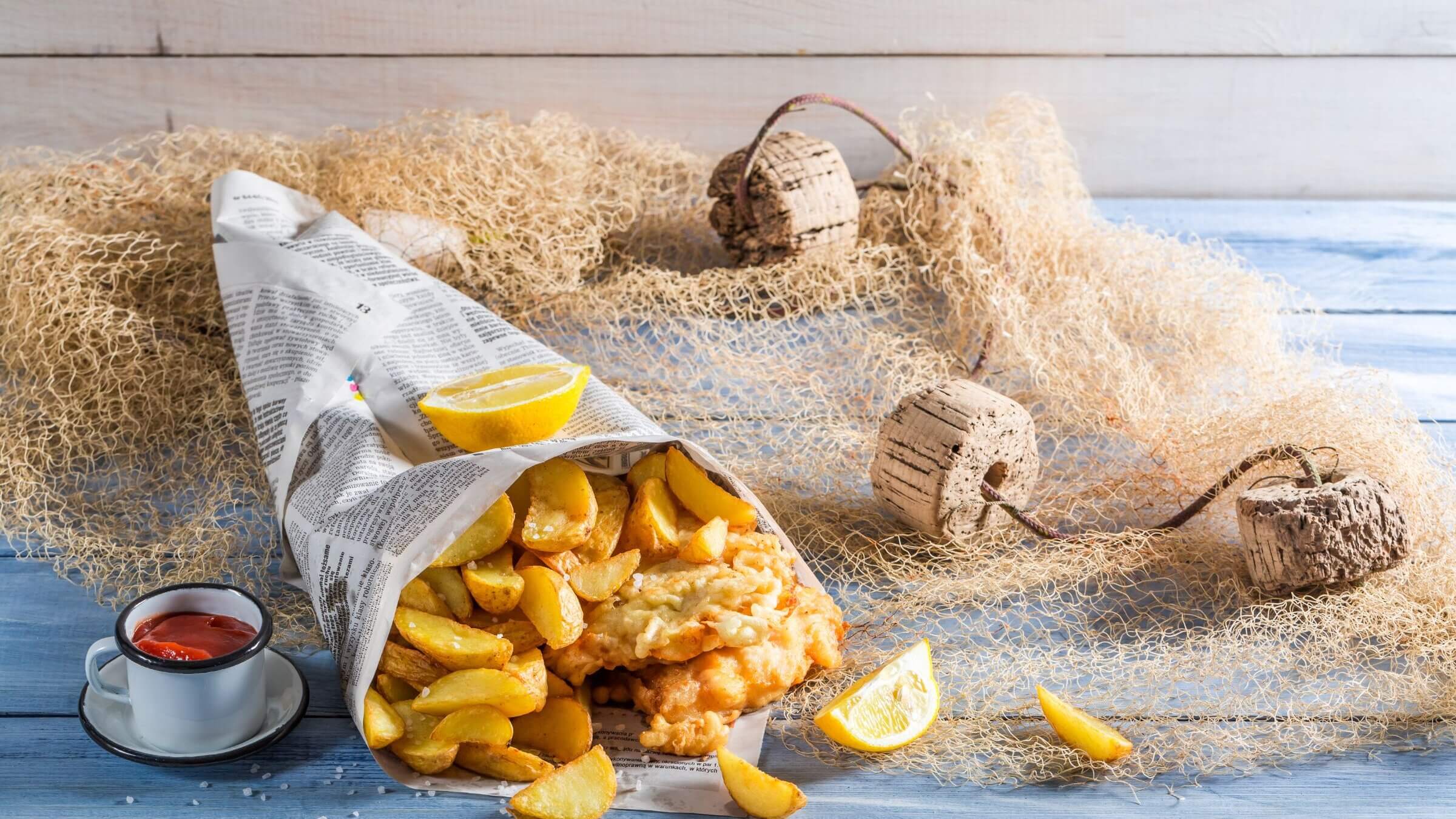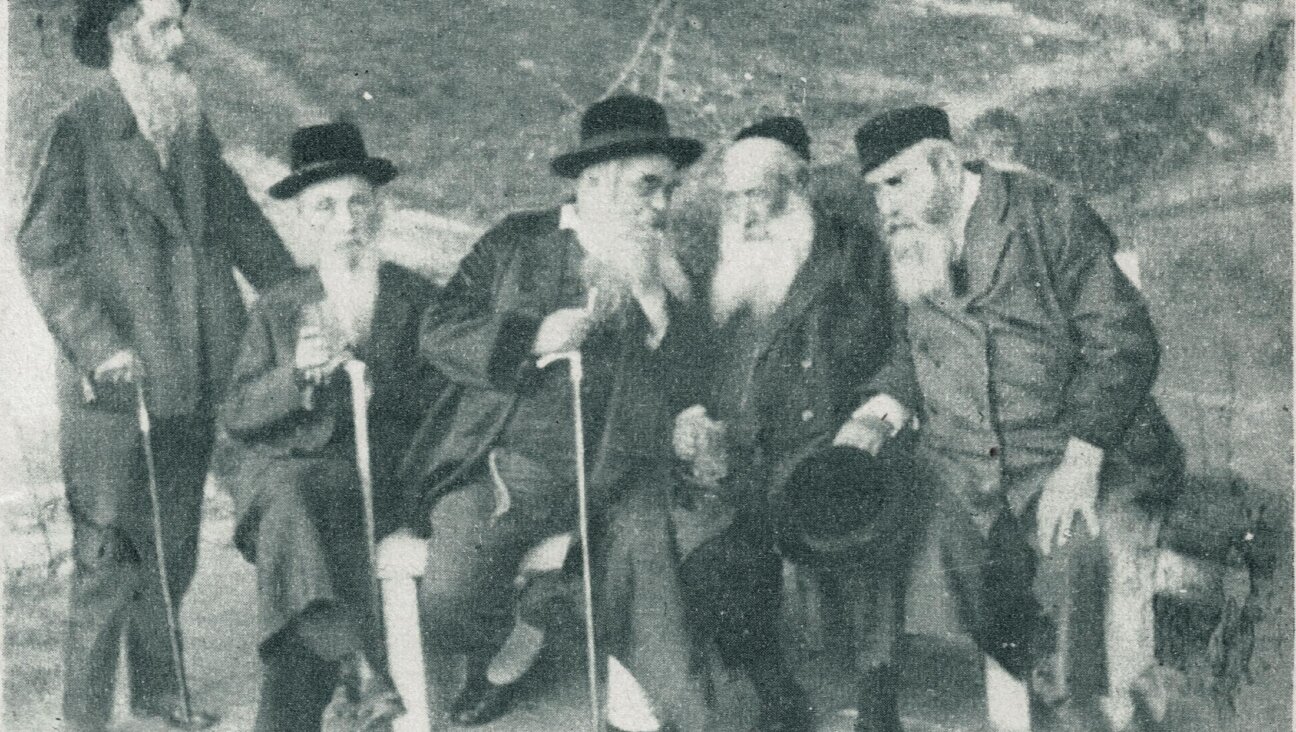No, British fish and chips is not a Jewish invention
Jews fleeing the Inquisition allegedly introduced the fried fish used in this iconic dish

Photo by Shaiith Photography/Getty Images
Jewish fried fish is often cited as the origin of British fish and chips. As the story goes, Spanish and Portuguese Jews fleeing the Inquisition for the Netherlands and then England brought fish fried in oil with them, which they ate cold on the Sabbath when lighting a fire is prohibited.
How did this legend get started? In his 1950s essay on early Anglo-Jewish history, the British Jewish historian Cecil Roth wrote that the Portuguese physician Manuel Brudo, a “Marrano,” had noted in his 1554 book about fever diet that “Marrano” refugees in England loved their fried fish. Marrano, Spanish and Portuguese for pig, is a disparaging name for Jews who converted during the Inquisition to avoid persecution, but who maintained Jewish customs in secret.
First of all, we don’t even know if Brudo was Jewish, a crypto-Jew, or a New Christian. Secondly, according to historians Aviva Ben-Ur and Jessica Hammerman, Brudo refers neither to “Marranos” nor to fried fish and, it follows, he doesn’t identify fried fish with “Marranos.” He does write that “Portuguese people” customarily eat salted fish.

Even if Roth were right, the story makes no sense. There are many ways to fry fish, several of which appear in the first Jewish cookbook published in the English language, The Jewish Manual (1846). It was authored “by a lady,” who, as it turns out, was Judith, Lady Montefiore. One recipe is for fish dredged in flour and fried in oil, best eaten cold. A second one calls for sole dipped in egg, then in breadcrumbs, and fried in butter, best eaten hot (and actually identified as “English”).
Dishes prepared “the Jews’ way”
A third recipe calls for dredging fish in flour and frying it in oil before marinating it, for a dish called escabeche, which is served cold. None are specifically identified as Jewish or recommended for the Sabbath, although fish fried in oil and eaten cold was and still is a beloved Sabbath dish on the English table. Israel Zangwill sang its praises in his 1892 novel Children of the Ghetto.
A century earlier, Hannah Glasse published a recipe for “preserving salmon and all sorts of fish the Jews’ way” — a recipe for escabeche, which begins by dredging fish in flour and frying it in oil before pickling it in vinegar. Glasse adds that “all sorts of [flour-dredged] fish fried well in oil, eat very fine cold with shallot, or oil and vinegar.” This recipe appears in the appendix to the sixth edition of The Art of Cookery, Made Plain and Easy (1758) and is believed to be the first time that a recipe for frying fish in oil and serving it cold appears in print as a Jewish dish, at least in the English language.

This is one of several recipes that Glasse recommends for long voyages to the East Indies, presumably by merchant ships, and one of several recipes for dishes prepared “the Jews’ way,” among them one for kishke (stuffed derma), which she calls “English Jews pudding.” She also provides other recipes for escabeche and for fish dredged in flour or breadcrumbs and fried (almost always in animal fat), but does not identify them as Jewish. Her recipe for battered fish, which is surely a progenitor of the battered fish of British fish and chips, is also not identified as “the Jews’ way.”
Even a Roman cookbook had this recipe
A century later, Alexis Soyer, in A Shilling Cookery Book for the People (1855), also provided recipes for fried fish, including two in the “Jewish fashion,” one of them battered in a mixture of flour and water and the other dipped in flour and then egg, and fried in oil.
In a word, floured fish fried in oil predates the arrival of Sephardic Jews, as evidenced by recipes in earlier English cookbooks, and the use of oil or butter to fry fish dredged in flour is common to many cuisines. A brief recipe for frying floured fish in oil and preserving it in vinegar even appears in a Roman cookbook thought to have been written by Apicius in the fifth century.
What distinguishes fish in the “Jews’ way” is not only dredging it in flour and frying it in oil, but most importantly, eating it cold and according it pride of place on the Sabbath table. The fried fish in British fish and chips is a different dish. The fish is battered, it may be fried in beef tallow, lard, or oil, and it is served piping hot. It has its own long history, and there are regional differences in type of fish, batter, cooking fat, and condiments, and even the name of the dish varies.
Their different histories have been conflated to produce the oft-repeated Jewish origin of British fish and chips. The role of Jews in the early history of England’s fried fish trade and chip shops, however, is a whole other story.
The recipe
(Source: Hannah Glasse, The Art of Cookery Made Plain and Easy, 1758)
Of preserving salmon and all sorts of fish the Jews’ way. Take either cod, salmon, or any large fish, cut off the head, wash it clean and cut it in slices as crimp’d cod is, dry it very well in a cloth then flour it and dip it in yolks of eggs and fry it in a great deal of oil till it is of a fine brown and well done. Take it out and lay it to drain till it is very dry and cold.
Whitings, mackarel [sic] and flat fish are done whole; when they are quite dry and cold lay them in your pan or vessel, throw in between them a large quantity of mace, cloves and sliced nutmeg, a few bay leaves; have your pickle ready, made of the best white wine vinegar, in which you must boil a great many cloves of garlick [sic] and shallot, black and white pepper, Jamaica and long pepper, juniper berries and salt; when the garlick begins to be tender, the pickle is enough: when it is quite cold pour it on your fish and a little oil on the top. They will keep good a twelve month and are to be eat cold with oil and vinegar: they will go good to to [sic] the East-Indies.
All sorts of fish fried well in oil, eat very fine cold with shallot, or oil and vinegar. Observe in the pickling of your fish to have the pickle ready: first put a little pickle in, then a layer of fish, then pickle, then a little fish and so lay them down very close and to be well covered; put a little saffron in the pickle. Frying fish in common oil is not so expensive with care; for present use a little does and if the cook is careful not to burn the oil, or black it, it will fry them two or three times.
A message from our Publisher & CEO Rachel Fishman Feddersen

I hope you appreciated this article. Before you go, I’d like to ask you to please support the Forward’s award-winning, nonprofit journalism during this critical time.
At a time when other newsrooms are closing or cutting back, the Forward has removed its paywall and invested additional resources to report on the ground from Israel and around the U.S. on the impact of the war, rising antisemitism and polarized discourse.
Readers like you make it all possible. Support our work by becoming a Forward Member and connect with our journalism and your community.
— Rachel Fishman Feddersen, Publisher and CEO






























